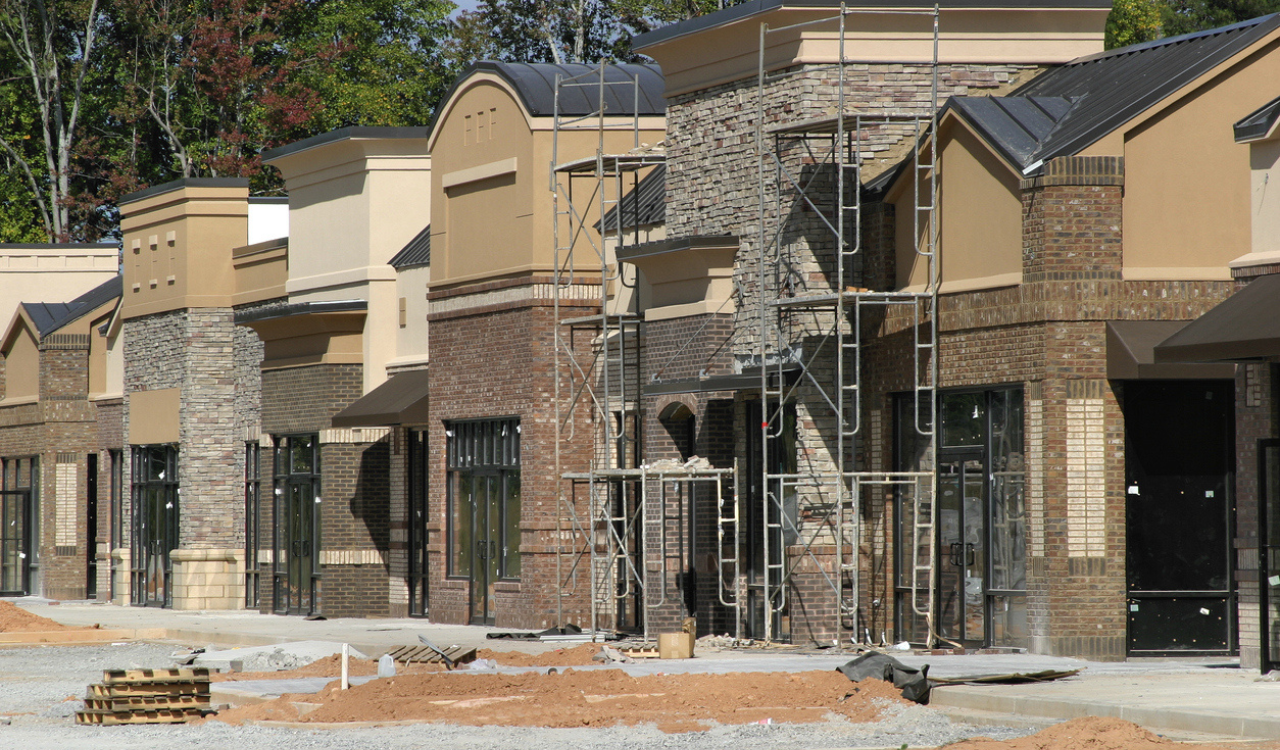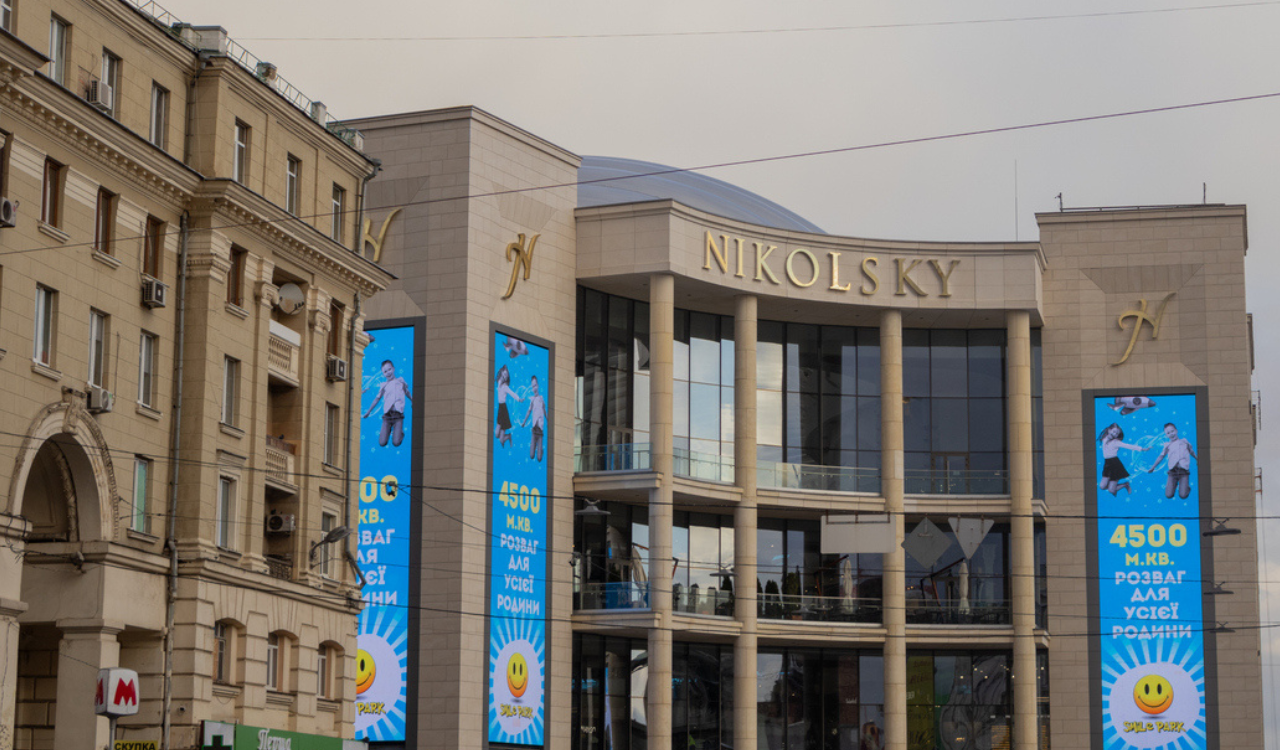Headlines have proclaimed the “death of the retail store” since the emergence of disruptive ecommerce, and long before the struggles brought by the pandemic, the surge of Chinese marketplaces, and, of course, Trump’s tariffs. 2025 has delivered no shortage of early warning canary calls.
Real Estate Redefined
Tariff pressures, escalating operational costs, and high interest rates have not derailed retail real estate. Instead, they are reshaping it. Rising construction costs and expensive financing are steering capital away from new developments and toward repositioning existing assets. At the same time, shifting consumer lifestyles, particularly among younger generations, are giving open-air and mixed-use spaces new relevance. The result is a market defined by closures at one end of the spectrum and reinvention at the other, with investors, developers, and retailers reshaping the landscape.
Retailers with significant real estate holdings are better insulated from rising rents and capital costs and can leverage property as both a financing tool and a growth asset. The market is beginning to reprice this dynamic, treating real estate not as a static asset but as the true measure of long-term strength.
Closures and Consolidation
The first half of 2025 was retail’s weakest leasing period since the pandemic. U.S. retailers vacated nearly fifteen million more square feet than they occupied, reversing two years of steady growth. We’ve experienced the recent closure of Joann’s, Party City, Rite Aid, and Forever 21. With Walgreen’s plan to go private, 450 store closures are estimated for 2025, with many more slated through 2027. The acquirers of bankrupt retailers Claire’s and Big Lots have shed additional, multiple locations as well.
San Francisco Centre exemplifies the severity. Once among the Bay Area’s top-performing malls with sales exceeding $1,000 per square foot, the property now sits 93 percent vacant and headed for foreclosure after Nordstrom and Bloomingdale’s departed. What killed it was not ecommerce but an ecosystem collapse: Pandemic closures, surging crime, homelessness, and organized retail theft decimated foot traffic.
But are we really witnessing the end of brick and mortar as we know it? Not quite. Step back from the headlines, and the capital flows to doubling down on new formats, categories, and markets that will earn their keep. The state of retail real estate, much like retail itself, has evolved under pressure from a rapidly evolving global climate into new territories. While closures make headlines, the underlying math tells a different story.
Developer’s Dilemma
Despite early-year softness, national retail vacancy remains below 5 percent, the lowest since the 1980s. Even as net absorption dipped into the red in early 2025, indicating that tenants are vacating more space than they are occupying, the lack of emerging new space has kept competition for prime locations tight and rents edging upward.
Developers face a tough equation. For developers, the barriers to breaking ground are steep. Tariffs on steel and aluminum are inflating construction costs just as elevated federal interest rates make borrowing expensive. Only 7.2 million square feet of new space was delivered in Q2 2025, the lowest since 2000. Since 2009, completions have averaged just 0.5 percent of inventory, the slowest rate of any major property type.
New construction has been limited over the past decade, and that scarcity is one of the biggest reasons retail vacancy remains near historic lows and has become retail real estate’s most reliable stabilizer. Asking rents reached a record $22.73 per square foot nationally and are projected to grow 3.1 percent annually through 2029. With few new projects breaking ground, attention has shifted to adaptive reuse and mixed-use conversions.
What’s Old Is New
With new construction constrained, redevelopment is where the activity lies. Across the country, some enclosed malls are being repositioned as open-air mixed-use community centers blending retail, housing, healthcare, and entertainment, keeping supply tight and value strong. These dynamics are pushing investors to favor adaptive reuse projects and repositioning strategies over speculative new builds. In practice, that means that some existing malls, shopping centers, and neighborhood retail are getting a second life.
Open-air centers are the clear outperformers. Neighborhood and community centers continue to thrive with 5.6 percent vacancy, while regional malls hover above 10 percent. Open-air centers and mixed-use developments have sought to become the new “third places,” balancing commerce with connection. Grocery anchors and personal services provide stability, while flexible footprints accommodate gyms, medical suites, and co-working spaces.
Psychographic Reinvention
Limited supply isn’t the only reason retail real estate is holding steady, as changing lifestyles are driving demand for spaces that serve more than transactions. Gen Z consumers are redefining how and where people gather. They drink less alcohol, exercise more, and tend to socialize through shared activities rather than exclusively nightlife. Running clubs, boutique gyms, and sober social events are turning shopping centers into hubs of community life.
Experiential retail reinforces this shift. Brands like Coach, Ralph Lauren, and Gucci are weaving cafés, workshops, and cultural activities into their stores. Coach Coffee and Ralph’s Coffee have evolved from marketing stunts into global lifestyle extensions that boost traffic and dwell time. Gucci has blurred the line between retail and hospitality with its Gucci Osteria and Giardino 25 concepts. These examples illustrate how the store is becoming a place of belonging rather than transaction, and in that evolution, retail is reclaiming its cultural relevance.
Retailers Getting into the Real Estate Game
Developers slow clean-sheet projects and consumer psychology shifts, so, retailers are stepping in to reshape the landscape and build ecosystems that place their brands at the center. These efforts now extend beyond managing their own footprints. This strategy is already visible across the industry, as major retailers acquire and redevelop key properties.
- Walmart acquired the Monroeville Mall near Pittsburgh for $34 million, with plans to reposition it as a mixed-use destination blending retail, entertainment, hospitality, and residential.
- Dillard’s purchased the Longview Mall in Texas, citing concerns about absentee landlords.
- Costco is anchoring a $425 million project in Los Angeles that integrates a warehouse store with 800 apartments, including affordable housing units. The development, enabled by California’s streamlined housing approvals, reflects retail’s emerging role as a catalyst for community infrastructure.
- IKEA has taken the urban approach with their acquisition of Nike’s flagship at 529 Broadway in SoHo for $213 million, planning to use the lower floors for a small-format store and convert the upper levels into office space.
Collectively, these moves reflect a structural evolution. Retailers are moving beyond managing their own footprints to secure long-term stability, brand alignment, and control over the environments that shape the customer experience. They are no longer passive occupants but active stewards of the spaces where they operate. Increasingly, that stewardship is being reflected on the balance sheet.
Retail Real Estate on the Balance Sheet
Real estate is increasingly the quiet anchor of retail valuation. In some cases, the value of owned property exceeds the market capitalization of the company itself. Macy’s exemplifies this conundrum. Analysts estimate its real estate holdings between $7.9 billion and $10.5 billion, compared to a market capitalization of roughly $4.8 billion as of fall 2025. Several activist investors have argued that Macy’s real estate alone could justify its valuation, noting that the market heavily discounts its retail operations. In its 2024 10-K filing, Macy’s acknowledged this imbalance, outlining plans to sell underperforming properties and explore redevelopment where the land is worth more than the store.
Dillard’s, by contrast, shows how real estate ownership can strengthen the balance sheet without overshadowing it. The company owns the majority of its stores outright, with total assets around $3.7 billion and equity near $1.9 billion, and carries little net debt. That ownership gives it flexibility that many peers lack, whether leasing to third parties, redeveloping, or maintaining cash flow stability during downturns.
Across the sector, this pattern repeats itself. Retailers with significant real estate holdings are better insulated from rising rents and capital costs and can leverage property as both a financing tool and a growth asset. The market is beginning to reprice this dynamic, treating real estate not as a static asset but as the true measure of long-term strength.
How Now for the REITs
According to Matt Reid, Vice President, Tenant Representation at ASG, “The continued strength in dominant assets and in traditional REITs is amplified by the strategic divestment of non-core or weaker assets over the past several years, which has allowed them to focus energy and capital on their core and more dominant assets.” The strength of retail property ownership extends beyond individual companies. The public equity markets underscore the retail sector’s fundamental health, with Real Estate Investment Trusts (REITs) demonstrating significant stability and growth. The total equity market capitalization for NYSE-listed REITs currently stands at approximately $1.264 trillion, serving as a key bellwether for the entire commercial property landscape.
The Shopping Center segment has emerged as a sector leader, proving its resilience and ability to generate solid returns. This strength is directly tied to the performance of daily needs and necessity-based retail formats. Major operators like Kimco Realty reported outstanding performance in their Q2 2025 results. The company not only increased its full-year 2025 FFO guidance but also reached an all-time company record for small shop occupancy at 92.2 percent. This stability allows operators to wield significant pricing power, reflected in double-digit rent spreads on new leases. Their optimism is driven by achieving near-record high occupancy rates and successfully exercising significant pricing power on new and renewing leases, a testament to the limited supply of new competitive space.
Even the often-maligned mall segment is signaling a robust comeback, with premium assets thriving, shifting from pandemic-era distress to renewed investor confidence. Mall giants like Simon Property Group, reported a 4.2 percent increase in Domestic Property Net Operating Income (NOI) in its Q2 2025 results. This growth is directly supported by high occupancy rates across its premium portfolio. Further signaling a return to pre-pandemic financial health, the company raised its quarterly common dividend to $2.15 per share in Q3 2025 and increased its full-year FFO guidance.
Investors are projecting continued high returns for the sector, reflecting confidence in its sustained cash flow. Retail REITs’ earnings are forecast to grow by approximately 7.0 percent per annum over the next few years, maintaining a robust trajectory despite broader economic uncertainty. This growth signals a high degree of confidence in the retail sector’s ability to maintain and grow its distributable income.
Resilient but Redefined
Retail real estate is at once challenged and robust. Closures highlight the fragility of overstretched chains, but adaptive reuse, off-price expansion, and community-driven formats are driving resilience. Developers face headwinds from tariffs and interest rates, yet capital is flowing into reimagined assets with stable demand.
Perhaps most importantly, consumer lifestyles are reshaping the market. Younger generations are prioritizing social wellness, fueling demand for open-air spaces and mixed-use environments that serve as modern third places. Retailers, developers, and investors alike are responding, transforming brick-and-mortar into the economic and cultural anchors of the next generation.
With vacancies near multi-decade lows and rent growth projected to outpace inflation through 2029, the future of retail real estate won’t be measured in square footage alone, but in its ability to anchor communities, experiences, and enduring value. “At the end of the day, despite continued growth in ecommerce and the current unusual impediments to retailing (notably unwarranted price inflation), consumers will still support physical brick-and-mortar shopping where their needs and wants are fully satisfied,” says Mark Cohen, former director of Retail Studies at the Columbia Business School and my TRR colleague.





